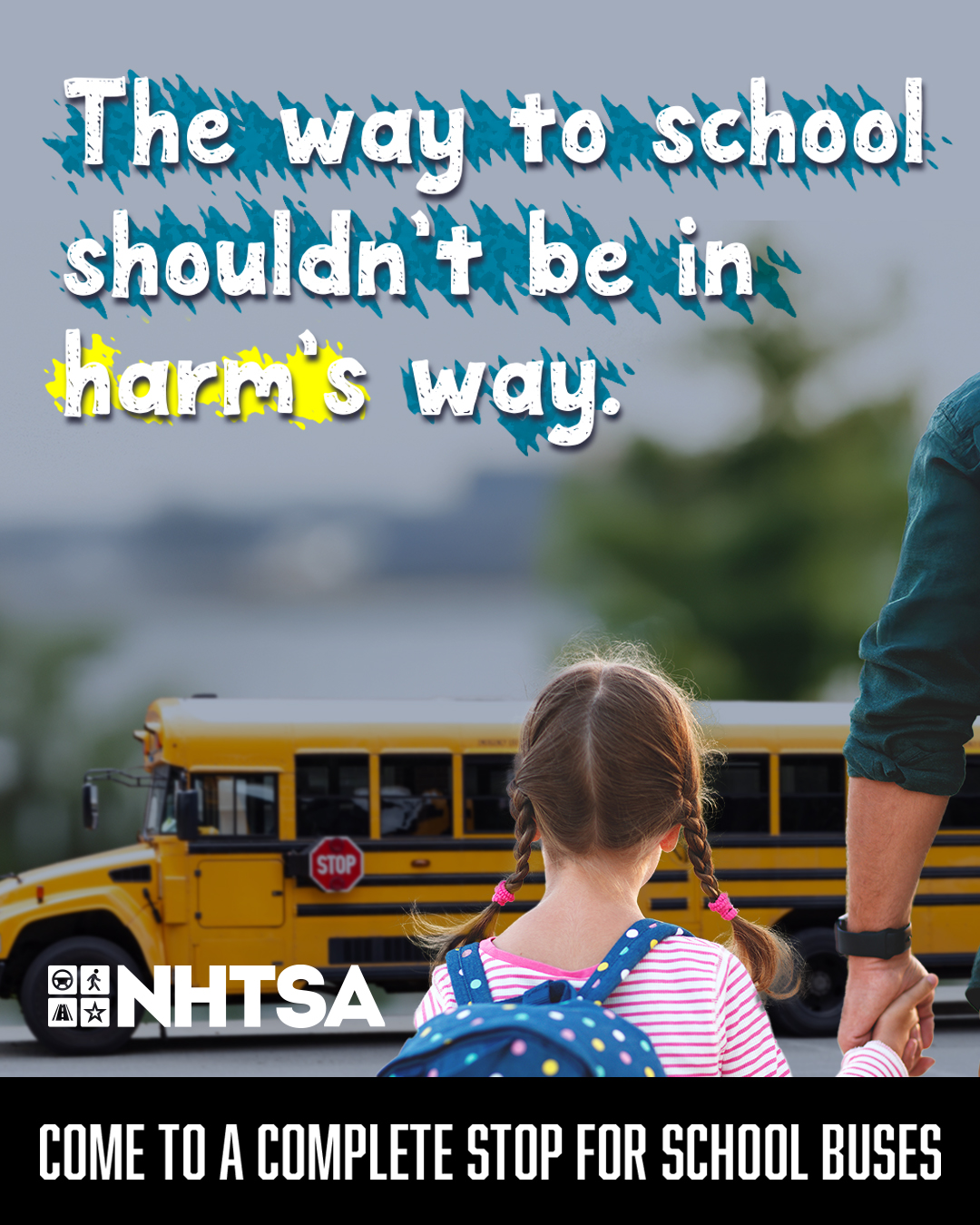Overview
Each school day, millions of children ride school buses. Did you know that the school bus is one of the safest vehicles on the road? Less than 1% of all traffic fatalities involve children on school transportation vehicles. However, children are more at risk when approaching or leaving a school bus. It’s important for all drivers, as well as parents and students, to understand school bus safety.
Stop for School Buses
When you see a school bus slowing down or stopping, it’s not just the bus that you need to have your eyes on – but the surrounding area too. Children wait at least several feet away from a bus and often cross the street when they’re boarding or getting off the bus. This is why you must stop for school buses, and don’t attempt to pass.
Illegal School Bus Passing
Illegal school bus passing poses a significant threat to children and others on the road. In every state, it is illegal for you to pass a school bus while the stop-arm is extended and the red lights are flashing.

Understanding School Bus Lights
Learn the school bus laws in your state and always follow them, as well as the flashing lights that school bus drivers use to alert you. Yellow flashing lights indicate the bus is preparing to stop to load or unload children. You should slow down and prepare to stop your vehicle.
Red flashing lights and extended stop arms indicate the bus has stopped and children are getting on or off. You must stop your car and wait until the red lights stop flashing, the extended stop-arm is withdrawn, and the bus begins moving, before you can start driving again.
Bus Stop Safety
Parents, it’s important to talk to your child, or children, about bus stop safety. Here are some tips.
Before the Bus Arrives
Your child should arrive at the bus stop at least five minutes before the bus arrives. Ahead of the new school year, visit the bus stop and show your child where to wait for the bus, at least ten feet — five giant steps — away from the curb. Remind your child that the bus stop is not a place to run or play.
Getting On and Off Safely
When the school bus arrives, your child should wait until the bus comes to a complete stop, the door opens, and the driver says it’s okay to get on or off. Your child should use the handrails to avoid falling.
Always Use Caution Around the Bus
Your child should never walk behind a school bus. If your child must cross the street in front of the bus, tell them to walk on a sidewalk or along the side of the street to a place at least ten feet — five giant steps — in front of the bus before crossing. Your child should also make eye contact with the bus driver before crossing to make sure the driver can see that they’re crossing to avoid the danger zone. If your child drops something near the school bus, like a phone or book, the safest thing is for your child to tell the bus driver right away. Your child should not try to pick up the item, because the driver might not be able to see them.
Bus Safety
School buses are the most regulated vehicles on the road; they’re designed to be safer than passenger vehicles in preventing crashes and injuries; and in every state, stop-arm laws protect children from other motorists.
Different by Design
School buses are designed so that they’re highly visible and include safety features such as flashing red lights, cross-view mirrors and stop-sign arms. They also include protective seating, high crush standards and rollover protection features.
Seat belts play an important role in keeping vehicle passengers safe, but since school buses are different by design, they have a different kind of safety restraint system.
- Large school buses are heavier and distribute crash forces differently than passenger cars and light trucks. These differences help bus passengers experience much less crash force than those in passenger cars, light trucks and vans.
- NHTSA decided the best way to provide crash protection to passengers of large school buses is through a concept called “compartmentalization.” This requires that the interior of large buses protect children without them needing to buckle up. Through compartmentalization, children are protected from crashes by strong, closely -spaced seats that have energy-absorbing seat backs.
- Small school buses (with a gross vehicle weight rating of 10,000 pounds or less) must be equipped with lap or lap/shoulder belts at all designated seating positions. Since the sizes and weights of small school buses are closer to those of passenger cars and trucks, seat belts in those vehicles are necessary to provide occupant protection.
NHTSA has developed FAQs to help you understand how NHTSA’s regulations define school buses, multifunction school activity buses, school-related events, and much more.
NHTSA is dedicated to promoting safe behaviors on our nation’s roads
NHTSA is responsible for establishing Federal Motor Vehicle Safety Standards to reduce the number of fatalities and injuries resulting from motor vehicle crashes.
Showing our commitment to children’s safety on school buses, we have established minimum safety standards for school buses that are above and beyond those for regular buses because we believe school buses should be as safe as possible. We also offer parents safety information about school buses and traffic safety rules for drivers and children to follow near bus stops and school zones.
As part of a comprehensive program to improve safety, the agency developed a pupil transportation toolkit, which includes an interactive tool for planning safer school bus stops and routes. We also support national school bus training.

